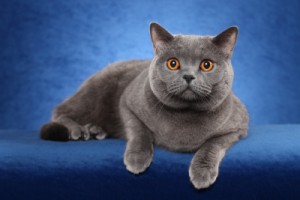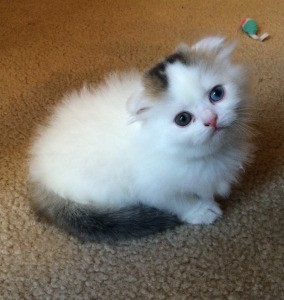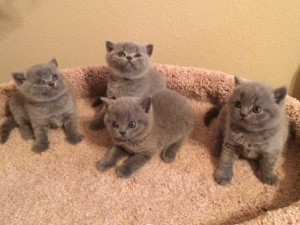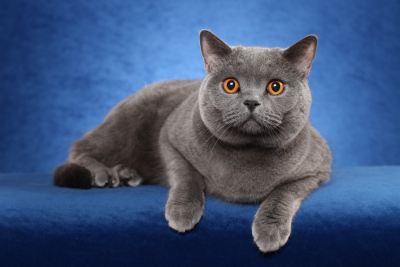Have you ever wondered what life is like as a professional cat breeder and shower? Mrs. Janice Frank, a chemistry teacher here at Westwood, and her husband breed and show cats. They own British Shorthairs and Scottish Folds; in addition to competing in cats shows all over Texas, they breed their cats, producing show-quality kittens that sell from anywhere between $1,250 to $2,000.
 Q: How did you get started in cat showing?
Q: How did you get started in cat showing?
A: We lost our dachshund; it was about 15 years old, and we had to put her down. We were very sad, and needed a replacement pet. We decided to do cats instead of dogs; cats are a little lower maintenance. We never had cats before, my husband and I. We got one that was a show quality cat, and started showing him — we liked the idea of the cat shows.
Q: Why did you begin showing and breeding the cats? Why not just get a regular pet cat?
A: My husband is very competitive, so he wasn’t just going to get a cat, he was going to get the best British Shorthair cat he could get. And then we just thought, you know, ‘maybe we should breed these?’. We’re both getting close to retirement, and we thought that this would be something we could do.
Q: And what is a cat show?
A: A cat show is where you take your cat and they judge it based on the standard of the breed. It’s like a dog show, but there’s no agility. We have Scottish Folds and British Shorthairs — British Shorthairs are supposed to have the golden eyes, the ears are supposed to be set so many fingers apart, their coat is supposed to be a certain thickness, their legs are supposed to be a certain length; there’s all these qualities that the judges look for.
Q: What happens at these shows, exactly?
A: Everyone thinks that you take your cat and walk them or something like that, but you don’t. You put them in a cage and sit with them in their cage, and when your number’s called you take your cat up and put it in the judge’s cage. The judge takes the cat out and looks it over and judges it, writes down a few notes, then he puts it back in the cage, and when he’s done he’ll say come get your cat, you go and take your cat out of the cage and put it back in your cage. You do that in 5 rings, morning and afternoon, for three days.
Q: How do the cat shows tie into to breeding the cats?
A: When you go to shows they judge the cats on the standard of the breed and you get your ranking, then you can breed your show-quality cats. So that’s what we started doing. We started breeding British Shorthairs and now we are [also] breeding Scottish Folds (www.britsandfolds.com).
Q: How much do the show-quality cats go for?
A: The cats are very expensive; we sell the British Shorthairs for $1,500 and the Scottish Folds, if their ears fold, for $2,000, and if they don’t fold we sell them for $1,250 to $1,500.
Q: Is it hard to take care of all the kittens?
A: You have to feed them t hree times a day, and you have to clean constantly. My problem with it, not so much my husband’s problem, is I get too attached: I name them. And once I name them, my family’s like ‘Oh no, we’re done’, because then I’m crying when the people come to buy them, because I just can’t let them go! But you can’t keep them all.
hree times a day, and you have to clean constantly. My problem with it, not so much my husband’s problem, is I get too attached: I name them. And once I name them, my family’s like ‘Oh no, we’re done’, because then I’m crying when the people come to buy them, because I just can’t let them go! But you can’t keep them all.
Q: What is the hardest part of breeding the cats?
A: The hardest part is to let go, but it’s not easy to breed the cats — because there is a mortality rate, and you can kind of tell in the beginning; if they’re not nursing and not getting their nutrients, that something’s just not right. Sometimes we intervene and hand feed them, but you can tell that nature’s going to take its course and the kitten is not going to make it. I hand fed one every two hours for ten days (it was like I had another child!) and it didn’t make it, so it’s hard.
Q: Have you ever had a really special kitten?
A: We had one kitten that was all over the internet because it was something we had never seen: it was a long haired Scottish Fold, and its ears folded, with one blue eye, one green eye, and was calico, which means it has to be female, but it was a male. So it has male parts, but it had the female genes. We diagnosed it as Klinefelter’s Syndrome, so it’s a sterile cat, but it was carrying the extra X chromosome.
Q: What is it like, having a house full of cats?
A: They’ve got character – especially at three in the morning! That’s when they want to play. Usually they want to wake you up during the night. Jumbo sleeps with us — he will come up in the middle of the night and make you scoot over because he’s got to have enough room up on the bed.





